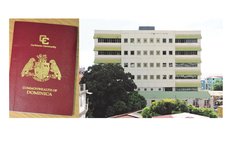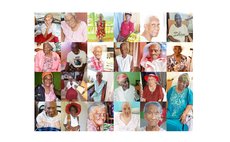Crime and Development: the Impact on Tourism
Last week the Inter-American Development Bank (IDB) revealed that crime and violence have had a dramatic effect on the economic and social development of the Caribbean. The Washington-based financial institution said that new studies underscored the impact that crime has had on women's health, children and property values and that Latin American and Caribbean citizens have rated crime and violence above unemployment and healthcare as their major concerns. Most notable the IDB reported that the region suffers from some of the world's highest homicide rates, stating that twenty of the world's most violent cities are located in Latin America and the Caribbean. But the IDB tells us what we already knew.
For instance, two years ago Governor of the Eastern Caribbean Central Bank (ECCB) Sir Dwight Venner told the Association of Caribbean Commissioners of Police (ACCP) at a meeting in Barbados that crime was having a negative impact on economic activity and growth in the region. He told the Police Commissioners that the cost of fighting crime in Jamaica in 2001, for example, was 3.7 per cent of the country's gross domestic product. However, according to Sir Dwight, the major problem arises because of the impact of crime on tourism.
What is most worrisome is that the international news media has been taking note of the escalating levels of crime and violence in the Caribbean. In an article published some time ago, International Business Times cited the "increasing amount of high profile murders and disappearances" in the Caribbean and that some tourists had begun to "question if the Caribbean islands are a desirable and safe vacation destination."
In that article the magazine also published a ranking with the name of the country followed by the number of homicides per 100,000 population. That ranking showed that Martinique (4.2), Anguilla (6.8), Antigua & Barbuda (6.8), Guadeloupe (7) and British Virgin Islands (8.6) were the "safest countries in the Caribbean" while Jamaica (52.1), Saint Kitts and Nevis ( 38.2), Trinidad and Tobago (35.2), Bahamas (28) and Puerto Rico (26.2) were the "most dangerous" Caribbean nations. That article did not rank Dominica but at 23.1 per 100,000 population in 2010 (according to the website Guns Policy .Org) our country's crime rate is much too high to be ignored.
Two years ago that fact was made abundantly clear by the killing of Joe Costello, a native of Dublin who lived at the Pagua Bay House in Marigot. That incident again raised the issue of the fragility of tourism and the adverse impact that crime in general has on the sector in Dominica and the Caribbean. But as we stated in an editorial then, though Dominicans have talked the subject of escalating crime rates to death very little has been done to treat the main causes.
There are suggestions that the Pagua Bay murder was just one more of the crimes which has affected tourism in Dominica in recent times. We are aware that several cases of assault against tourists occur here regularly but the press do not reported these incidents. Of course, senseless crimes against tourists occur in all tourism destinations but in Dominica, where tourism development is at its infancy, these incidents have extremely serious repercussions because crime generally stunts the growth of tourism. Moreover, Dominica boasts of being one of the least crime-ridden countries in the Caribbean although statistics do not give credence to that view.
Undoubtedly, crime has been a major constraint to the development of the Caribbean and political leaders must now do much more than talk about the problem. According to the World Bank report: Crime, Violence and Development Trends, Costs and Policy Options in the Caribbean" murder rates in the Caribbean are higher than in any other region of the world and assault rates are significantly above the world average. The causes of such alarming statistics are well known. For instance, we know that Caribbean countries are fast lanes for the cocaine traffickers of Latin America and that gun ownership, an offshoot of the drug trade, is the fuel that generates violent crimes. Youth violence, we are told, has become a major threat to public health and criminal deportees from the United States have directly and indirectly contributed to the increase in crimes in the region. Additionally, the criminal justice system is ineffective and inefficient; and the emergence of the gang culture among our youth is one of the most disturbing aspects of the growing crime culture.
Most importantly the root of today's lawlessness has been attributed to the loss of respect for the State and the rule of law. This situation is acerbated by the perception of high levels of corruption in high places including the offices of the heads of government.
In discussions of violent crimes against tourists on the talk shows, the issue of the role of the press in the dissemination of negative information about the tourism industry has been highlighted. As usual Dominican newspapers are compared to publications in Jamaica and Barbados where, it is claimed, gruesome crimes are relegated to the inside pages. Nothing could be further than the truth.
The point we need to stress is that much more needs to be done to control the spate of crimes in Dominica before it is too late. Crimes committed against Dominicans are bad enough but they are worse when directed against the fragile and absolutely important tourism industry.




